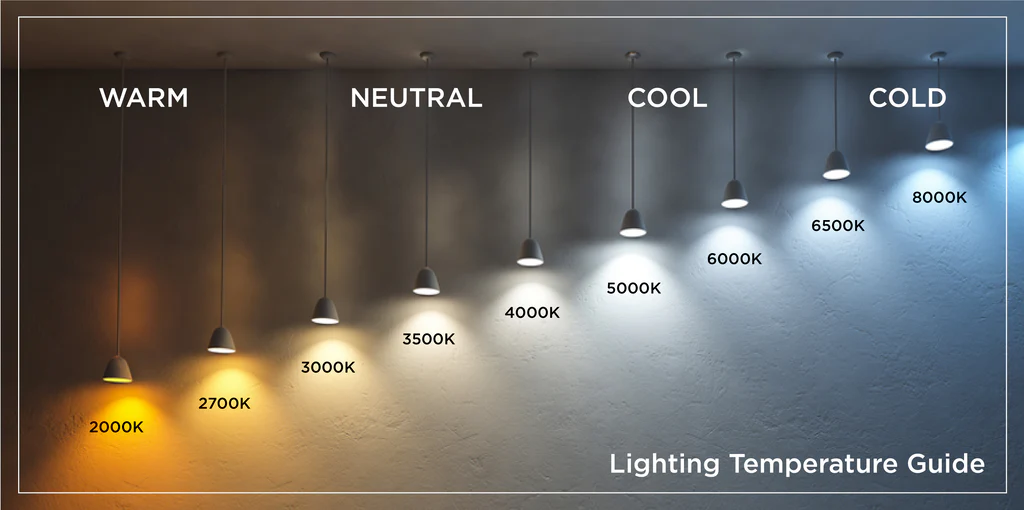What is Layered Lighting?
Layered lighting refers to a design practice that seeks the application of various light sources, each applied in different amounts and intensities, for the establishment of a cooperative and responsive light arrangement. While this process satisfies all functionality needs through a combination of ambient, task, and accent light, it also presents an interior with not only valuable requirements but also refined beauty. Layered lighting provides depth, texture, and visual interest and warms and invites the space. It sets the mood, increases visibility, and offers ambience for various activities.
Layers of Lighting: Its Significance
Layered lighting is essential because it makes it possible to design a properly balanced space that can be made to fit diverse purposes. Layered lighting has functionality and flexibility in terms of design. Ambient lighting, for example, creates general lighting, task lighting provides focused lighting for a specific function, and accent lighting emphasizes architectural features or decorations. All of these layers come together to create a functional as well as stunning space.
Different Types of Layers of Lighting
Ambient lighting
Ambient lighting is the overall light source for a whole room. Ambient light gives an even amount of light so that everything in the space can be viewed and not strain your eyes. Ambient lighting is what helps to create the overall mood and warmth of a room. Ambient lighting tends to come from sources such as ceiling lighting, recessed lighting, or dense light fixtures such as chandeliers.
Daylight
Daylight is an ambient source of natural light from the sun. Not only does it illuminate rooms, but it also increases mood and energy levels. Daylight creates a sense of being in touch with the outside and is typically used to generate a sense of openness in a room. It is especially ideal in spaces like living rooms or offices where natural light is required.
Flushmount
Flushmount light refers to the lights mounted against the ceiling with a gapless finish between the fixture and the ceiling. The lights are widely utilized for ambient lighting to create a wide spreading of light in low-ceilinged rooms. They are silent, energy-efficient, and come in different designs that match the décor of the room.
Chandelier
A chandelier is an ornament lighting fixture, typically suspended from the ceiling. It’s both a functional and an ornamental piece, providing ambient light and being the focal point of a room. Chandeliers are typically located in dining rooms, foyers, and other formal rooms, providing a touch of elegance and sophistication.
Pendant
Pendant lights consist of light fixtures suspended from the ceiling and usually held in place by a string or chain. Depending on their size and location, pendant lights serve as ambient light or task light. They are arranged in groups or placed in a line to achieve a trendy, modern appearance and are great for homes, dining rooms, or home offices.
Task lighting
Task lighting is all about providing you with bright, sturdy light exactly where you want and need it most — places you’d like to see up close well, such as while you are reading, cooking, or working. Task lighting reduces eye strain and helps make activities more straightforward and more relaxing.
Floor lamps
Floor lamps are those individual tall lights which you place wherever you want to cast light directly where you want it. They are ideally suited for a living room, bedroom, or reading nook. You can get them to cast their glow on some particular area, such as above the chair, so that you can read or relax more comfortably.
Table lamps
Table lamps rest on nightstands, side tables, or desks, and they deliver concentrated light for reading or working on your computer. They’re convenient to relocate, and you can get them in an assortment of styles to match your room’s atmosphere. In addition to being functional, table lamps can be a great addition to the room’s design.
Desk lamps
Desk lamps are just like table lamps, but they’re designed just for work surfaces. Desk lamps are usually adjustable, so you can aim the light where you want it — ideal for concentrated activities such as writing, reading, or typing on the computer.
Bathroom vanity lights
Bathroom vanity lights are hung above or alongside mirrors and shine the ideal amount of light where you shave or put on your makeup. It is intended to illuminate your face uniformly without placing any shadows there, allowing you to go about your grooming without difficulty or a lack of accuracy.
Cabinet lights
Cabinet lights are designed to illuminate the inside of cabinets, which is primarily within the kitchen, closet, or glass-front case. The lighting facilitates complete visibility of contents within and is typically mounted at the bottom of cabinets or in the rear of glass-front displays. The lights provide convenient access and organization of contents, especially where there is poor lighting.
Accent lighting
Accent lighting is used to highlight particular objects, pieces, or architectural features within a room. Accent lighting produces drama, depth, and visual interest by bringing attention to painting, sculpture, or a rough-textured wall.
Wall sconces
Sconces on a wall are decorative lighting fixtures that are mounted on a wall, employed to create a gentle light or highlight sections of a room. They are perfect for illuminating the art and architecture or sectionalizing an area overall. From a hallway, living room, or even a bedroom, wall sconces are a minimalist but stylish source of light.
Track lighting
Track lighting is a series of lights installed on a track. You can adjust their positions to direct them to shine where you wish. It is a perfect option to highlight specific objects, like artwork or areas of the room. Track lighting offers convenience and can be used to create dramatic effects, especially in modern designs.
LED tape
LED tape (or LED strip lighting) is a flexible strip of small lights that can be stuck to walls, ceilings, or under cabinets. It’s perfect for creating a soft, ambient glow or highlighting specific elements in a room. Because it’s flexible and easy to install, LED tape is often used to create seamless, glowing effects without being too noticeable.
Rope lighting
Rope lighting is a series of small lights wrapped in a flexible tube, allowing you to shape it however you like. It’s often used for accenting features like staircases, ceilings, or furniture. Rope lights are great for adding a subtle glow to a room or outdoor space, and they create a cosy, inviting atmosphere.
Light layering in interior design – How can it be incorporated into different spaces?
Layered lighting is an integral part of interior design, which allows you to create functional, cosy, and beautiful spaces. Following is how to apply light layers in different rooms in your house:
Living room
For the family room, ambient, task, and accent lighting will all suffice. Apply ambient lighting (e.g., overhead or recessed lighting) for general light, task lighting (e.g., floor or table lamps) for reading or another use, and accent lighting (e.g., wall sconces or track lighting) to create highlights to artwork or architectural features. Layering these diverse sources of light gives functionality as well as a warm, cosy ambience.
Bedroom
Warm and soft ambient lighting can be employed for the bedroom to provide a warm atmosphere. Employ task lighting such as bedside lamps or wall lights, which are adjustable for reading or otherwise. Accent lighting, such as under-bed lights or sconces, can add drama and make the room more intimate. Dimmers are the right choice in terms of having control over making the light variable depending on your mood.
Bathroom
Overhead lighting or recessed lighting may be used as ambient lighting, but task lighting below the mirror (such as lighting under a vanity) provides vision for grooming. Accent lighting may be used to emphasize an object, like a decorative mirror or artwork. It gives an even ambience that is functional and aesthetically pleasing.
Kitchen
In the kitchen, layered lighting is needed for both work areas and ambience. Start with ambient lighting (like overhead lighting or recessed lights) for general illumination, then add task lighting beneath cabinet spaces or above workspaces to increase visibility for cooking and prep. Accent lighting can be used to highlight something like a backsplash or open shelving. Layering those lighting layers gives safety as well as part of the design.
Outdoor spaces
Outdoor, use ambient lighting (like landscape lighting or string lights) to create a welcoming, cosy environment. Task lighting can be added in areas like patios, outdoor kitchens, or dining areas to enable activities at night. Accent lighting, like spotlights or pathway lights, can light landscaping, trees, or building features. Exterior layering adds beauty and functionality to your space.
What’s the best way to illuminate an open-concept space using layered lighting?
In an open-concept space, the key is to maintain a sense of flow while providing proper lighting for each zone. Use ambient lighting (like recessed lighting or overhead fixtures) to provide general illumination throughout the space. Task lighting (i.e., pendant lights or floor lamps) can be placed in specific areas like the reading area or kitchen counter. Accent lighting (i.e., track lighting or LED tape) is employed to call attention to architectural features and artwork or provide visual interest. The idea is to keep the balance of the illumination while making each section feel unified while reacting to its function.
Innovative Technology in Layers of Lighting
Smart bulbs and automated lighting systems are transforming the application of layered lighting. They allow for customization, where you can change the intensity level, colour, and temperature of your lights according to your mood or activity. Voice control and lighting apps allow you to control the light layers with a single command, which is efficient and convenient. Automated systems may be set to adjust light layers based on time of day, presence, or schedule. Perhaps the most significant benefit of bright lighting is savings of energy — you can have lights turn off when you’re not around or dim when maximum light isn’t necessary, which lowers energy usage.
Conclusion
Layered lighting is essential to create functional, lovely, and adaptable rooms in your home. With the use of ambient, task, and accent lights in each room, you will be able to create an environment that suits different needs and moods. Smart technology takes it a step ahead by introducing flexibility, convenience, and power efficiency into the picture. Based on the right combination of light layers, your home can appear stunning and perfectly appropriate for daily life.
FAQs
What’s the difference between accent and ambient lighting?
Ambient lighting gives general, overall lighting to the room, while accent lighting emphasizes areas or objects, creating depth and drama.
What’s the best way to light a small room using layers?
Begin with soft ambient lighting, supplement with task lighting for particular tasks, and employ accent lighting to emphasize a centre of interest without overwhelming the room.
What colour temperature works best for different layers of lighting?
For ambient lighting, warm white (2700K-3000K); for task lighting, cool white (3500K-4000K); and for accent lighting, neutral white (3500K).
What is a layer of lighting trend?
The trend is employing bright, adjustable lighting, which provides dynamic control and adjustability between layers to achieve flexible, energy-efficient lighting designs.

